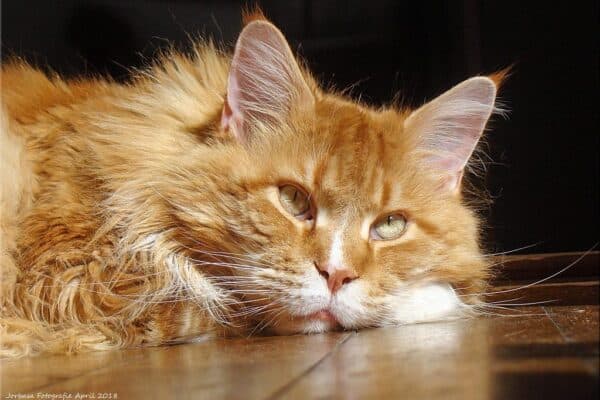
Is a Quiet Cat a Happy Cat?
Myth #1 about cats: A still, quiet cat is a content cat.
We’ve all gotten used to the image of cats adopting a sphinx-like pose, all tucked up, staring off into space in a mysterious, meditative way. We’ve come to believe (or want to think) this means they are peaceful or content. Maybe. But maybe not, too. That lethargy or immobility we may have become accustomed to can also be a sign of boredom, depression, or just not feeling all that well physically.
A Cat in a Breadbox Position
If a kitty is tucked up in a “breadbox shape” on the back of your couch, he may look serene and marvelously mysterious to you, but sometimes that position can mean a cat isn't feeling well. Cats are innately stoic and don’t show pain (as it would be a sign of weakness in “the wild” where they would be prey) so you have to pick up subtle clues as to how they are feeling. If you haven’t been to the vet for a wellness exam within the year, this could be an indicator that your veterinarian should do some routine blood tests but especially a physical exam. For example, something you’d never know would be oral problems that can cause great discomfort.
Exercise Needs to Be Hunting Games
Cats are highly alert hunters with a strong natural drive to go after prey. If they were outdoors (which is no longer a safe option for kitties) their prey would be a rodent, a bird, a butterfly, a salamander or crawling insects. Stalking these forms of prey, and then pouncing on them, is what rings their bell and keeps them mentally and physically “tuned up.”
Is it essential for cat owners to play with their cats twice a day --- for as little as five minutes! --- to keep them physically and mentally stimulated and fulfilled. You’ll want to have any of the “fishing wand” style toys that have a fake prey object on the end. But you have to be cognizant that the way you are moving the toy is realistic---play with it as if it was real prey in the way it moves, the way it goes behind, under or over objects, and that it always moves away from the cat as prey would naturally do.
There has to be a Treat Payoff
Being able to devour the prey is the completion of a natural hunting cycle for a cat. The cycle is hard-wired in their brains and begins with the trigger of his hunting instinct, the arousal, the stalking, the chase, and then the satisfaction of “the capture.” After just a couple of minutes of wand toy play you should let the cat capture the object --- but then divert his attention from it by putting down or throwing a very small bit of cheese or meat, or Halo Liv-a-Little freeze-dried pure chicken treats. Giving the cat quality protein in this way is healthy for an obligate carnivore’s metabolism, and can take the place of part of a meal (reduce the amount of canned food according to how many treats you feed).
You can Also Play Fetch or Laser Light
Some cats will chase and retrieve an object you throw for them and bring it back (sort of!) in a dog-like fashion. The return of the object to you should be rewarded with a small healthy protein treat. If you play with a laser light, you must be thoughtful not to drive the cat “crazy” and frustrate him by never letting him complete his hunting cycle. After a couple of minutes of laser light play, put down a nice little protein treat (Halo has Liv-a-Littles in wild salmon, too) and shine the light on it. When the cat pounces on the treat, turn off the light, let him munch away, and the game is over.
A Truly Content Cat
If you know your cat is physically healthy, you’re feeding him right, and you’re giving him a couple of rapid play sessions daily, then you can rest assured that your laid-back cat who is chilling out on a high perch is truly the mellow, content cat you’ve always wanted him to be.
---Tracie Hotchner
(Have a comment? Share it on Facebook.)
Halo is a sponsor on Radio Pet Lady Network, by our invitation.
photo credit: Jorbasa Träumer - Dreamer via photopin (license)

